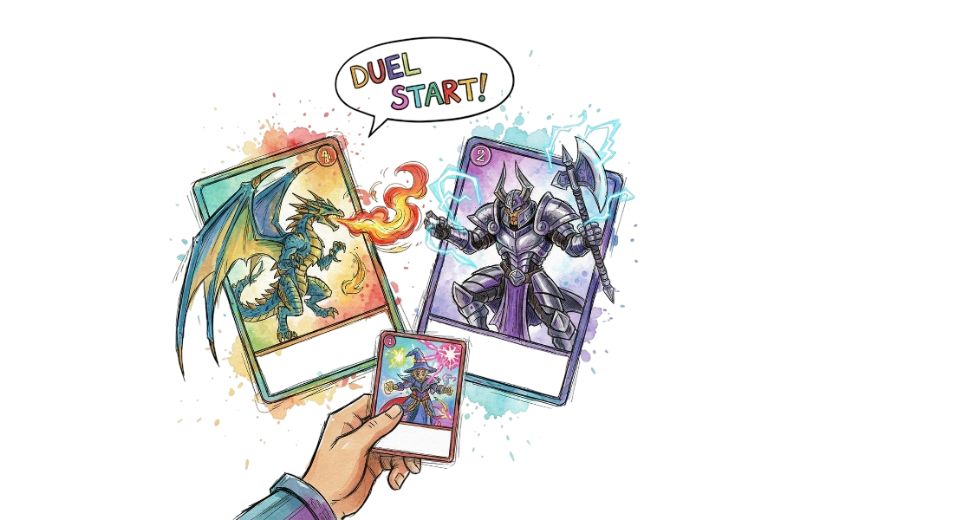
Sep 23, 2025

Metastat Insight, a reputable provider of market research and intelligence, has unveiled an in-depth publication titled global collectible card games market. This newly released report delivers an enriched perspective on the worldwide landscape for collectible card games, presenting valuable context for publishers, distributors, and investors who seek a clearer understanding of current dynamics and projected developments. The study captures how trading card culture has moved far beyond hobby store shelves, embedding itself into a broader entertainment culture where nostalgia and innovation coexist.
The report charts cards games evolution through the time by showcasing their journey from analog world gatherings to extensive online platforms. It discusses the interplay between the two - physical and virtual games, unravelling how printed decks of cards still attract collectors while digital counterparts gain popularity among new users due to their easy access and engaging features. The worldwide market for collectible card games is characterized as a web linking the elements of strategy, visual art, and community participation, hence allowing players to be fully immersed in the game even after leaving the table.
Metastat Insight research also pays close attention to the expanding entertainment footprint of the category. Card games now coexist with streaming channels, competitive gaming circuits, and pop culture partnerships, enabling them to tap into audiences previously beyond the player community. This has made collectible card games cultural items that influence fan groups and drive original content, ranging from fan art to live tournaments broadcast globally. The impact on fashion, merchandise, and even cinema and TV shows further emphasizes the power of these games to move beyond their native medium.
The report explores how the global collectible card games market serves a wide spectrum of participants. Collectors look for rare editions and limited-run releases with high perceived value. Casual players tend to choose decks that are easy to access and are designed for quick fun. On the other hand, competitive participants focus on the detailed construction of strategies that can be flexible with the frequent updates and new mechanics. Each of these segments injects the market with momentum in its own way, thus maintaining the continuous flow through the channels of physical retail as well as online platforms.
One of the most important parts of the study is the account of community-building practices and their role in maintaining engagement. Neighborhood game stores remain the core locations for competitions and friendly games in several areas, however, online matchmaking systems and virtual tournaments have become new means for players from different parts of the world to link. The physical and digital interaction mix provides players with a unique feeling of togetherness and thus holds their interest high, which in turn translates into the number of multiple generations of players.
The study highlights the innovation cycle within the global collectible card games market. In order to retain the interest of the players, publishers very often come up with expansion sets, alternate artworks, event-specific cards, and cross-franchise collaborations. With digital-first releases, it has become possible to carry out card adjustments or balance updates instantly, thus, a game can remain competitive for a longer period and be fair. Seasonal releases and thematic events not only keep the games fresh but also, if they happen to be connected with the entertainment industry, ensure that they stay relevant in the fast-changing media environment.
Regional insights featured in the report reveal significant cultural distinctions shaping the market. In parts of Asia, detailed art styles and complex mechanics often attract dedicated fan bases, while Western markets tend to emphasize thematic storytelling and structured tournament play. Understanding these variations helps publishers craft localized strategies that resonate with their target audiences and strengthen brand presence in each territory.
Another critical layer explored by Metastat Insight is the secondary trading economy surrounding card games. With authentication tools and digital marketplaces now standard, trading and resale activity has become a trusted extension of the primary market. High-value cards circulate through auctions and peer-to-peer transactions, increasing engagement and drawing attention to the collectible aspect of the category. This secondary activity amplifies the perceived value of participating in the hobby and deepens the connection between players and publishers.
Essentially, by combining such elements, the report reflects the worldwide market for collectible card games as a steady and versatile branch of the entertainment industry. The change of the market from a niche hobby to a cross-media phenomenon is a clear sign of how the market has been able to keep its cultural relevance and create an active community of users from all over the world, who are connected with each other.
The global collectible card games market, depicted by Metastat Insight, is overall a vibrant and fertile ground where the interplay of such elements as artistic expression, rivalry, and cultural immersion occurs. This document is a necessary guide for business people and industry leaders, as it provides an indication of the market structure, consumer behavior, and fresh opportunities. By delivering such information, Metastat Insight is helping the decision-makers to steer through a category that is considered to have a strong impact and long-term worldwide engagement.
Drop us an email at:
Call us on:
+1 5186502376
+91 73850 57479